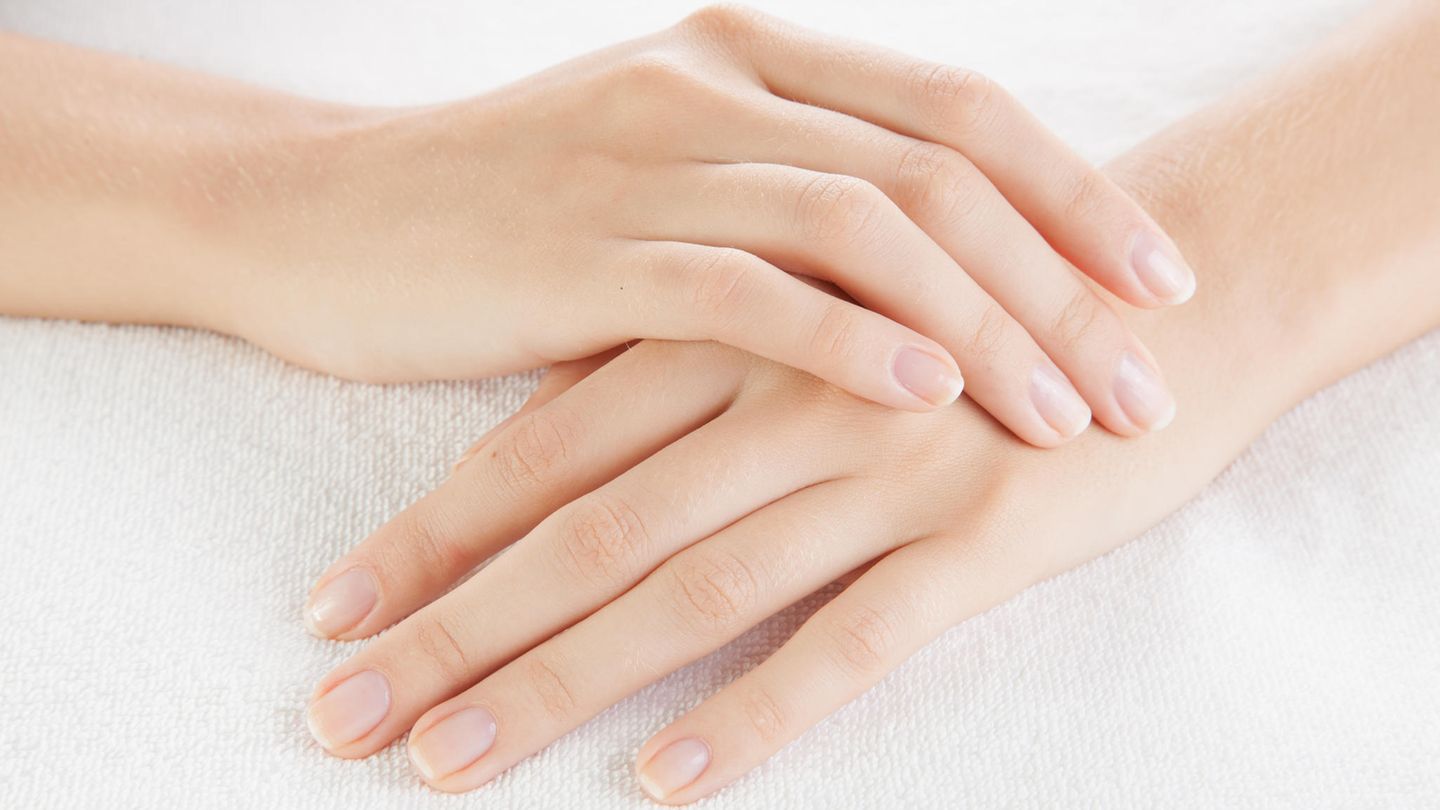No other parts of the body are used as often as our hands – and you can see that too: Not only as we age, but also with the daily work that they have to do. Regular hand care is all the more important.
The less we take care of our hands, the drier and rougher the skin becomes – especially in the areas that are particularly stressed. You should act at the latest when the knuckles on your fingers are reddened or the skin around them tears. Because dry hands not only look unkempt, they can also cause pain. In addition, bacteria have an easy job when the back or inside of the hand has small cracks. Therefore, it is advisable to follow the most important steps when cleaning and maintaining it. You can find out what these are in this article.
That’s why our hands are so sensitive
Although our hands are particularly stressed in everyday life, the skin on the back of the hand is extremely thin: it contains only a few sebum glands and hardly any fatty tissue. The inner surfaces have many sweat glands, but no sebum glands at all. As a result, the skin can dry out faster (and unfortunately also age) – especially if the hands are washed with soap or disinfected several times a day. But external influences such as UV rays, dry heating air, heat and cold also attack the natural protective film of the skin, which is normally supposed to protect our hands from drying out.
How to Wash and Care for Your Hands Properly
During the day, our hands come into contact with millions of germs: every time we go to the toilet, when shopping – even when we operate a door handle or on the computer keyboard. In order to protect ourselves and our fellow human beings (not only in times of Corona), it is important that you wash your hands regularly – for at least 20 seconds. This is the only way to prevent the transmission of possible pathogens. To prevent your skin from drying out too much, you should take the following tips to heart:
- use a nourishing soap that is pH-neutral
- wash your hands under lukewarm water
- dab your hands instead of rubbing them dry
- use one which moves in well
The right hand cream: this is what you should pay attention to
Which hand cream is right for you depends on two factors: your skin type and the time of year. For example, if you tend to have dry skin, it needs special care – and should be regularly moisturized. Here is a rich product that provides your hands with sufficient moisture. If, on the other hand, you tend to have sensitive and quickly irritable skin, you should use a hand cream without fragrances or dyes. For normal skin types, however, it is only important to know that the hands generally need more care in winter than in summer.
While nourishing ingredients like urea or glycerine are supposed to make dry hands smoother, ingredients like shea butter or olive oil have a calming and regenerative effect on the skin. According to, however, many products also contain harmful substances such as mineral oil-based fats, waxes or synthetic polymers. For this reason, the consumer portal primarily recommends buying that is free of dangerous problem substances such as PEG, paraffins and silicones. You should also pay attention to the following points:
-
Before buying, check whether a hand cream contains “butylphenyl methylpropional” – this is the fragrance Lilial, which is classified as problematic.
-
The same applies to the ingredients “Paraffinum liquidum” and “Cera Microcristallina”, which are mineral oil-based fats and waxes which, according to the Ökotest, can be contaminated with MOAH.
-
Do not use synthetic polymers in hand creams – excellent as acrylate and other co- and cross-polymers, carbomer, polyacrylamide, polyquaternium-10.
Peeling, mask & Co: further tips for hand care
Not only hand creams, but also hand peelings, hand baths and hand masks are suitable for regular care of your hands. Proceed as follows:
Hand peeling
Exfoliating regularly can help improve blood flow to your hands. This has a major impact on your skin: the poorer the blood circulation, the drier and more chapped your hands will be. Another positive side effect of hand scrubs is that they remove dead skin particles – but they should only irritate the skin slightly. This is made possible, for example, by a self-made peeling consisting of olive oil and sugar or salt. Massage it into your hands and then wash off the rest.
Hand bath
A soothing bath is also beneficial for your hands. For this there is from the drugstore for hand care, but you can also make the hand bath yourself with natural ingredients: Take warm milk and mix it with a little olive oil. Then dip your hands in the mixture and let the bath act on the skin for ten minutes – this makes it soft and supple.
Hand mask
Much like a face mask, the job of a hand mask is to keep your hands hydrated and nourished at the same time. It can be used both during the day and overnight – in this case, however, it is advisable to put cotton gloves over your hands so that the cream is only absorbed into your skin and not into your bed linen. Ordinary hand cream is suitable as a hand mask, but you can also use it as an alternative for dry hands or use. Or you can use foods that have a moisturizing effect on the skin, such as: avocado, quark and eggs. Mix the ingredients together and use them to cream your hands. Then leave the mask on for 15 to 30 minutes before rinsing off the remains with lukewarm water.
And one more tip at the end: Regular hand care also includes fingernails, especially cuticles. Always apply cream to the base of the nail so that it does not dry out and tear. It looks ugly and in the worst case it can even catch fire. Therefore, nail care should always be included in hand care.
There is more information here.




